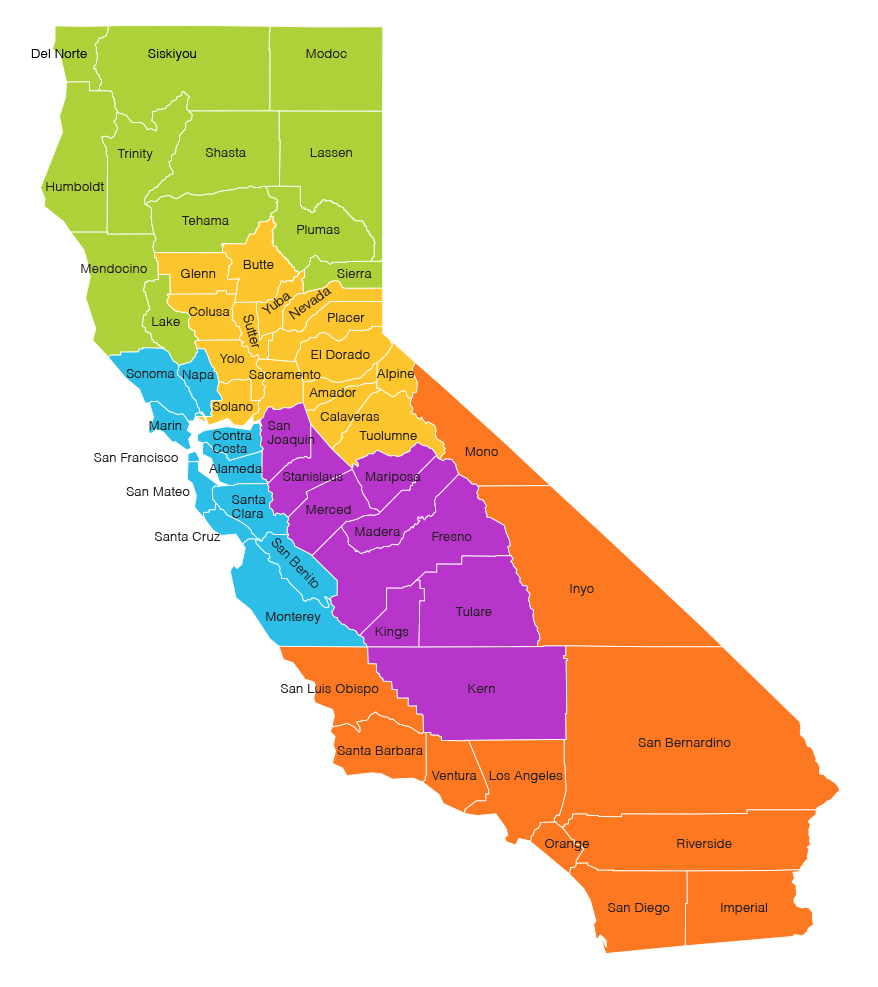California County Breakdown – Map, Population, Trivia & FAQ
California County Breakdown – Map, Population, Trivia & FAQ
Blog Article

Have you ever wondered what the exact county count in California is? You’d be surprised how many people ask the same question. Be it for research, a road-trip map, or pub-quiz glory, the answer—58—comes up again and again, and still that single digit barely scratches the surface.
California’s counties forma patchwork of contrasts: fog-kissed seaside towns, high-elevation wilderness zones, fertile Central Valley breadbaskets, and historic mission settlements. None of these counties lacks a unique backstory, forged throughrailroad expansion, promising new industries, and ever-changing demographics.
In the sections ahead, we’ll unpackthe timeline that locked the total at 58, the services counties deliver day-to-day, and the outliers that set fascinating records. Ultimately, you’ll know the facts—and be ready to ace any quiz with confidence.
Origins of California’s 58 Counties
When California joined the Union in 1850, the map was a patchwork of just 27 jurisdictions. Rapid gold-rush immigration pushed officials to subdivide vast districts. By the end of the 1870s, the count had risen to more than fifty counties, and in 1907 the remaining gaps were closed, cementing the canonical figure of 58.
Capitol archives indicate that fresh jurisdictions stemmed from three major pressures:
- Geographic isolation left settlers days from the nearest courthouse.
- Revenue battles between miners and farmers triggered secession campaigns.
- Ethnic enclaves sought their own seats.
In less than seventy years, the political map stabilised. In modern times, even bold secession schemes rarely get ballot traction, leaving historians to label the era when new counties sprouted truly closed.
From Kelp Forests to High Deserts: County Geography
Plot a route from foggy Crescent City to border-side Calexico, and you’ll cross a climatic kaleidoscope. Coastal counties soak up Mediterranean precipitation, while great agricultural belts battle drought cycles.
- Alpine districts such as El Dorado, Tuolumne, and Sierra receive winter snows.
- River-delta territories mix levee farms with wetlands.
- Off-shore authorities like Los Angeles manage marine sanctuaries.
Such variety explains why no two counties share identical economies. Climate, after all, shapes crops and careers.
What Counties Actually Do
Within the state’s tiered system, cities tackle local bylaws, but county boards oversee vital “unseen” duties that hold civilisation together. Cradle-to-grave—marriage licenses, tax rolls, voter registries—all are archived at the county clerk or recorder.
Sheriff’s departments patrol towns too small for police forces, while superior courts hear probate battles. Health departments coordinate Medi-Cal. Tax-allocation showdowns spark long agenda nights.
Case Study: Tiny Alpine County
Los Angeles County alone employs 100 000+ workers, highlighting how flexible county governance proves. One template doesn’t fit all when populations range from under 1 200 to over 10 million.
In the end, county offices translate state statutes into daily action. Knowing their role helps residents demand accountability.
Where the People and Money Are
California houses over thirty-nine million people, but the headcount is far from evenly spread. Los Angeles County alone packs nearly 25 %. At the other extreme, tiny Alpine County hovers around a thousand residents.
- Largest population: Los Angeles
- Least populous: Alpine County
- Biggest footprint: San Bernardino
- Compact footprint: City & County of SF
Economically, the disparities are just as sharp. Silicon Valley counties report six-figure median incomes, while Central Valley breadbaskets depend on seasonal labour influxes. These fiscal contrasts informs legislative redistricting every decade.
Knowing which county tops which list pays dividends: tax rates, job prospects, and lifestyle perks hinge on county lines.
An Epic 58-County Road Trip
For intrepid travellers, setting foot in each CA county more info ranks as a top geo-challenge. A popular itinerary begins in sunny San Diego, follows Highway 101 past surf towns, swings through Santa Cruz, then cuts a diagonal across nut groves and tomato fields, before climbing into the high Sierra for old stamp mills.
Breaking the Trip Into Segments
- Southern Swing – Border to wine country; a baker’s dozen of stops in four days.
- Heartland Stretch – Bakersfield up to the delta; produce-market run.
- Northern Peaks – crater-rim roads; fire-lookout hikes.
Cap off the circuit in Imperial, after two thousand kilometres of asphalt. By then, you can answer any road-trip quiz about county tallies—because you’ve seen them all!
Frequently Asked Questions
Below you’ll find concise answers to the most common county-related queries.
How many counties does California have?
Government documents list 58 counties—a number that hasn’t changed since 1907. Check any authoritative source, and you’ll find the same figure: 58 in all.
Where do the most Californians live?
Los Angeles County tops the list, home to over 10 million residents. Decades of immigration, entertainment dominance, and job growth keep the numbers high.
What is the smallest county in California by population?
The crown for smallest population goes to Alpine County, often cited at just about a thousand souls. Location along rugged mountain corridors limits large-scale development, preserving a frontier feel.
Which county covers the largest land area in California?
The land-area giant is San Bernardino County stretching more than 20 000 square miles. From Joshua trees to ski lifts, few regions illustrate California’s contrasts so vividly.
How did California end up with 58 counties?
Gold-rush politics, rail expansion, and farmland disputes carved today’s boundaries, ending when Imperial County formed in 1907. While secession talk appears now and then, no plan has passed statewide hurdles.
Could a region break away to become its own county today?
On paper, state statutes permit county formation, yet practical barriers loom large. Petition drives, feasibility studies, dual-county referenda, and a two-thirds vote in Sacramento make secession rare. Consequently, boundaries have frozen for over a century.
Which responsibilities fall to county governments?
Behind the scenes, counties keep daily life functioning: property assessments, public hospitals, welfare programs, and jails. Their wide remit bridges state mandates with community needs, making the 58 jurisdictions essential to all Californians.
Report this page